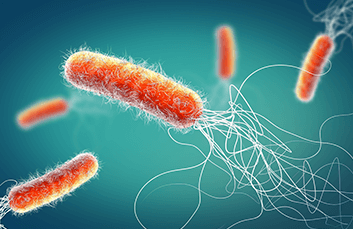AMR in Agriculture
Topics Featured
The food supply chain in the United States is among the safest in the world but the rapidly evolving threat of antimicrobial resistance (AMR) has made maintaining this safety increasingly difficult.
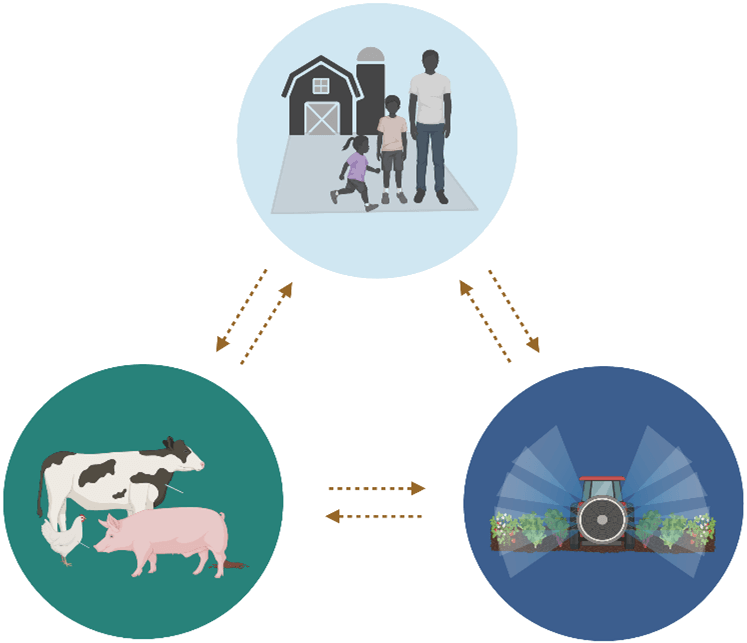
When animals and crops are treated with antibiotics or antifungals, resistant bacteria and fungi can develop and spread through stormwater, irrigation water, animal waste or even contaminated meat. If animal waste that contains antibiotic-resistant bacteria is used as fertilizer, fruits and vegetables can become contaminated too. These environmental AMR encounters are a major public health concern, as they can introduce drug-resistant pathogens to humans at any point during food production and meal preparation, creating liability issues for companies in the food production and hospitality industries.
Over 400,000 people die each year from foodborne illness, more than a third of whom are children under 5.
The 2019 AMR Threats Report from the Centers for Disease Control and Prevention (CDC) estimated that each year, approximately 660,900 antibiotic-resistant, potentially life-threatening infections in the United States can be tied to just two species of AMR bacteria – Salmonella and Campylobacter. Because these pathogens are commonly transmitted through food, they can cause outbreaks that are difficult to control – the World Health Organization states that over 400,000 people die each year from foodborne illness, more than a third of whom are children under 5.
In 2014, the White House tapped the Food and Drug Administration, Department of Agriculture and CDC to develop a strategy to combat the growing national and global threat of AMR in the food chain. A large part of this strategy is the National Antimicrobial Resistance Monitoring System (NARMS) – a program that aims to monitor AMR in the food supply. However, waiting for government and public health inspectors to identify AMR pathogens within a company’s facilities can be perilous and costly – there may already be sickness in the community and the resulting production shutdowns, legal liabilities and negative press can be disastrous. Stakeholders in the food production and preparation industry are better positioned to identify and resolve such problems internally before they develop and require government intervention. As always, prevention is the most cost-effective and safest approach.
The CDC has taken affirmative steps to combat the threat of AMR organisms in the food chain through its Antibiotic Resistance (AR) Solutions Initiative. This comprehensive plan is based on four principles:
- Detect: using comprehensive lab capacity and infrastructure for detecting AMR pathogens with cutting-edge technology, such as DNA-based diagnostics
- Prevent: harnessing early detection of AMR to prevent disease outbreaks
- Innovate: staying ahead of bacterial developments by implementing cutting-edge diagnostics
- Respond: identifying the source and preventing infection outbreaks
For food industry stakeholders, these same four principles of AMR surveillance can be applied to create an internal food safety program.
One way for stakeholders to monitor AMR in their production process is through wastewater-based epidemiology (WBE). WBE is the analysis of wastewater (i.e., raw sewage) for potentially pathogenic microorganisms. National WBE programs have perfected a protocol for wastewater surveillance, though they have primarily focused on estimating SARS-CoV-2 burden in communities. For food industry stakeholders, this protocol is easily adaptable to monitor AMR in their agricultural runoff and wastewater. The protocol is easy: Collect raw wastewater/runoff samples, concentrate the microbes present and analyze them for the presence of AMR genes. Once it is clear what AMR pathogens are present, then plans for combatting these organisms can be devised and implemented.
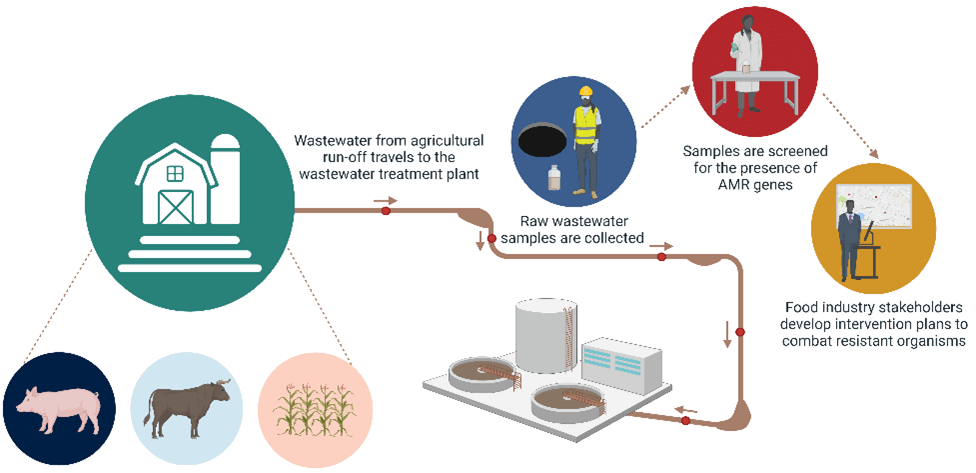
How can our products help you get an internal food safety program up and running?
- Using Nanotrap® Microbiome Particles for your wastewater concentration eliminates the need for filter precipitation or centrifugation, allowing for increased sample processing and widespread implementation wastewater/runoff surveillance.

- Streck ARM-D® Kits can identify over 1,000 AMR gene variants from 26 gene target families, allowing you to integrate comprehensive AMR surveillance into your program with ease. ARM-D kits can be used for WBE and in conjunction with the microbiological testing that occurs for all steps of the food production operation. If bacteria are found to be present in wastewater or at any time during the process, food industry professionals can determine whether they harbor AMR through a simple qPCR test.
Streck ARM-D Kits and Nanotrap Microbiome Particles are for Research Use Only. Not for use in diagnostic procedures.
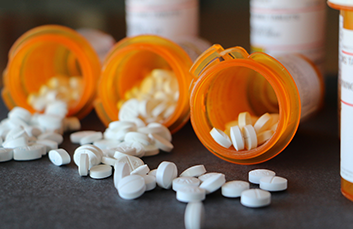
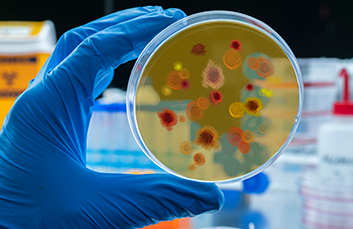
New antibiotic fights antimicrobial resistant bacteria
